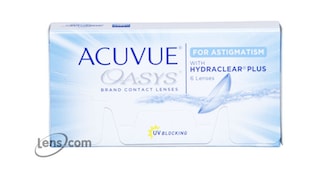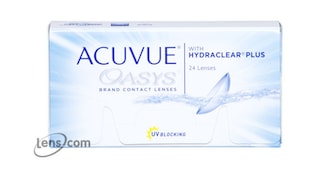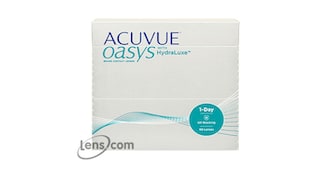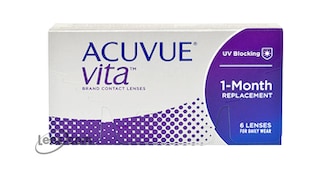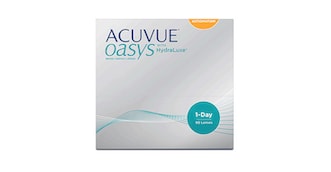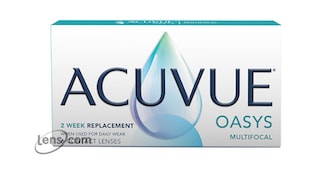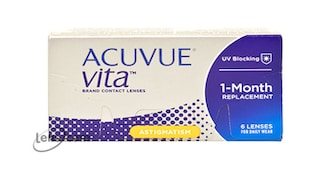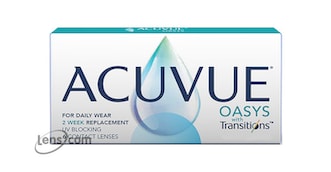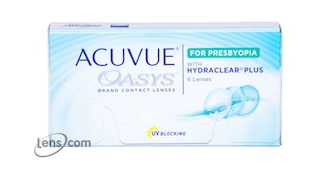Senofilcon A Contact Lenses
Senofilcon A is a new-generation silicone hydrogel material used in the manufacture of contact lenses. It is FDA-approved for up to six nights and seven days of continuous wear due to its relatively high oxygen transmissibility value (103-147 Dk/t).
| Most Popular Senofilcon A Contact Lenses Contact Lenses | |||
|---|---|---|---|
| All Senofilcon A Contact Lenses Contact Lenses | |||
|---|---|---|---|
| Senofilcon A Contact Lenses Contact Lenses With Rebates | |||
|---|---|---|---|
See All Available Senofilcon A Contact Lenses Rebates
| Rebates for Order Amounts | |||
|---|---|---|---|
| Senofilcon A Contact Lenses Brand Products | 4 Boxes | 8 Boxes | |
| Acuvue Oasys 12 Pack | $85 | -- | |
| Acuvue Oasys 24 Pack | $85 | -- | |
| Acuvue Oasys 1-Day for Astigmatism 30 Pack | $75 | -- | |
| Acuvue Oasys 1-Day for Astigmatism 90 Pack | -- | $180 | |
| Acuvue Oasys 1-Day with Hydraluxe | -- | $290 | |
| Acuvue Oasys 2-week Multifocal | -- | $160 | |
| Acuvue Oasys for Astigmatism | -- | $180 | |
| Acuvue Oasys for Presbyopia | $75 | -- | |
| Acuvue Oasys with Transitions | -- | $160 | |
| Acuvue VITA | $85 | -- | |
| Acuvue VITA for Astigmatism | $75 | -- | |
About Senofilcon A Contact Lenses Contacts
Features of Senofilcon A Contact Lenses
In the 1970s, doctors typically prescribed contact lenses made of hydrogel — a thin, pliable material that easily conforms to the surface of the eye — due to their comfort and ease of use. However, a major downside of hydrogel contact lenses is their tendency to dry out. The water in hydrogel contact lenses gradually evaporates, making them uncomfortable to wear for long periods. Hydrogel also has low permeability to oxygen, which the eye needs to stay white, moist, and healthy.
Eventually, contact lens manufacturers were able to improve the hydrogel polymers used in contact lenses. This improvement resulted in the introduction of silicone hydrogel contact lenses. From the name itself, silicone hydrogel is a polymer that contains both hydrogel and silicone — a gel-like polymer known for its high degree of flexibility. Like hydrogel, silicone hydrogel contains water. But unlike hydrogel, silicone hydrogel is porous and has better oxygen permeability.
In fact, silicone hydrogel allows five times more oxygen to reach the eye than hydrogel. With silicone hydrogel, contact lens wearers are less likely to suffer from a lack of oxygen supply to the eye, which can lead to acute inflammation, swelling, or infection. For this reason, silicone hydrogel lens materials like senofilcon A are much more suitable for overnight or continuous wear than hydrogel lens materials. Currently, senofilcon A is FDA-approved for up to six nights and seven days of continuous wear.
Moreover, senofilcon A is well-known for the level of ultraviolet (UV) protection it offers. Senofilcon A contacts are Class I lenses, meaning they can block 96% of UVA and 100% of UVB rays. UVA rays, which are closer to visible light rays, can easily enter the eye. Overexposure to UVA rays has been linked to macular degeneration (the leading cause of severe vision loss in people over the age of 60) and cataracts (the clouding of the lens of the eye). UVB rays, on the other hand, can irritate the eye, cause light sensitivity, and trigger excessive tearing.
Note that one major disadvantage of senofilcon A contacts and other silicone hydrogel contacts is their tendency to collect deposits more quickly than hydrogel contacts. Senofilcon A contacts and other silicone hydrogel contacts may also not be suitable for people who are allergic or sensitive to silicone.
Popular Senofilcon A Contact Lenses
Popular brands of senofilcon A lenses include those belonging to the ACUVUE® family of contacts by Johnson & Johnson, namely, ACUVUE Oasys, ACUVUE Oasys for Astigmatism, ACUVUE Oasys for Presbyopia. All three contacts are bi-weekly lenses that can be worn daily for two weeks or continuously for up to six nights and seven days.
Johnson & Johnson also carries ACUVUE Oasys with Transitions for contact lens wearers who prefer bi-weekly contacts indicated for daily wear only.
Other popular brands of senofilcon A contact lenses include ACUVUE Oasys 1-Day and ACUVUE Oasys 1-Day for Astigmatism. As daily disposable lenses, these contacts allow you to enjoy that “new lens” feeling every day. They’re also great choices for first-time lens wearers, children and teenagers, and anyone who doesn’t particularly enjoy the hassle of a lens care routine. On top of that, these contacts feature one of the highest levels of ultraviolet (UV) protection in a daily disposable lens.
Schedule a visit with your eye care professional to discuss your options.
How Much Are Senofilcon A Contact Lenses?
Senofilcon A contact lenses can cost $40 to $55 per box of six lenses, with each box lasting three months. If you replace your contacts every other week, expect an annual lens cost of $320 to $440. The actual figure may be lower or higher depending on how frequently you replace your contacts.
On Lens.com, senofilcon A contact lenses can cost as low as $15 per box of six lenses after rebates. Take advantage of our discount prices by shopping Lens.com today!
How to Insert and Remove Senofilcon A Contact Lenses
Senofilcon A contacts are soft contacts and as such, you should follow the standard procedure for that type of lens. Start by washing your hands with mild soap and water, then dry them with a lint-free towel. Scoop your first lens out of the case with your index finger of your dominant hand and rinse it with a cleaning solution that’s specially formulated for soft contacts. Inspect the lens for any tears or debris and make sure it’s not inside-out. Using the middle finger of your dominant hand, pull down your lower eyelid. If necessary, use the middle finger of your non-dominant hand to pull your upper eyelid. Look upward and gently put the lens on your eye. Blink a few times to center the lens. Repeat this with the other lens.
To remove senofilcon A contacts, hold your eyelids open and gently pinch the lens between your index finger and thumb. Carefully lift the lens off of your eye. Repeat with the other lens.
About Lens.com
Lens.com has been proudly offering high-quality contact lenses at discount prices since 1995. Choose from a variety of our senofilcon A contact lenses and enjoy hassle-free returns, quick shipping, and a 100% money-back satisfaction guarantee.
